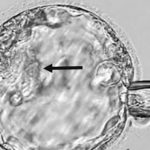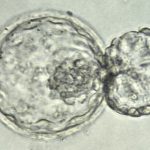Ovulation is a pivotal part of conception, occurring at predictable intervals for individuals with regular menstrual cycles. However, it’s not always easy to tell when it’s happening. Here are some effective methods to help identify if you’re ovulating:
1. Ovulation Predictor Kits (OPKs)
Using an OPK: An OPK is a urine-based test that measures your LH level. The “LH surge” induces ovulation, making OPKs a reliable tool for predicting ovulation. Here are some tips for using OPKs effectively:
- Choosing an OPK: There are many different types and brands of OPKs. Choose one that you find easy to read.
- Timing: OPKs should be used between roughly 2:00 pm to 8:00 pm. Using one first thing in the morning could lead to a false negative.
- Interpreting Results: If the OPK is positive, you are about to ovulate, making it an ideal time to have intercourse.
2. Basal Body Temperature (BBT) Tracking
Tracking BBT: This method involves taking your temperature daily and keeping a log. Here’s how it works:
- Daily Temperature Log: Record your basal body temperature every morning before getting out of bed.
- Identifying Ovulation: There is a subtle rise in your body temperature in the days following ovulation.
- Long-term Tracking: BBT tracking is more useful for understanding your cycle patterns over time. It helps in predicting future ovulation rather than pinpointing the current cycle’s fertile window.
3. Monitoring Cervical Mucus
Cervical Mucus Changes: Your cervical mucus changes in the days preceding ovulation. Here’s what to look for:
- Consistency: The mucus becomes thin and stretchy, often described as “egg white” in appearance.
- Observation: Track these changes daily to identify the fertile window.
When to Seek Help
If, after a few cycles, it’s not clear when or if you’re ovulating, it might be time to consult a fertility specialist. They can provide additional insights and tests to help you understand your individual situation.









